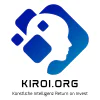Update 07.03.2023: Artificial intelligence and ChatGPT in the electronics industry
In today's digital world, we are surrounded daily by electronic devices that make our lives easier and more efficient. But how are these devices designed and manufactured? One important component is circuit diagrams, which determine the design and functionality of printed circuit boards. However, creating schematics can be a time-consuming and complex task.
ChatGPT is an advanced tool based on artificial intelligence (AI) that has also been developed for the electronics industry. It enables the automatic generation of circuit diagrams through the use of natural language. In other words, you can simply enter your ideas into ChatGPT and it will generate the circuit diagram or programming automatically.
ChatGPT also offers high accuracy and reliability in the creation of circuit diagrams. It uses advanced AI technology that has been trained on large data sets to ensure high accuracy and a high level of performance.
Overall, ChatGPT offers great added value for electronics developers by drastically simplifying and speeding up the process of creating circuit diagrams. It saves time and reduces human error, resulting in higher productivity and efficiency. So if you are in the electronics industry and are looking for a solution to create your schematics faster and easier, you should definitely give ChatGPT a try.
Which development tools are required for the production of printed circuit boards?
The production of printed circuit boards requires the use of certain development tools. Here are some of the most important tools that electronics developers need:
1. circuit diagram and layout software: Electronics developers use specialised software to design circuit diagrams and layouts for printed circuit boards. Some of the most common tools are Altium Designer, Eagle PCB and KiCAD.
2. placement machines: Pick and place machines are machines that can automatically place electronic components on the PCB. These machines are particularly useful for high-volume production and to increase productivity.
3. soldering equipment: The circuit boards must be soldered at various points in order to connect the electronic components to each other. The soldering equipment consists of a soldering station, a soldering iron and a soldering gun.
4. testing and measuring tools: It is important to check the circuit boards for faults and defects to ensure that they function correctly. Testing and measuring tools such as oscilloscopes, multimeters and signal generators are used for this purpose. These tools help to optimise the performance of the PCBs and perform quality assurance.
5. materials: Electronics developers need a variety of materials to produce printed circuit boards. These include PCB materials such as FR4 and aluminium as well as electronic components such as resistors, capacitors and ICs. It is important to use high-quality materials to ensure optimal performance and long-term stability.
The use of high-quality development tools and materials is crucial to producing high-quality printed circuit boards. Electronics developers should ensure that they have the right tools to carry out their work effectively and efficiently.
How can PCB production be optimised?
Optimising PCB production is an important step in achieving high quality and efficiency in the production process. Here are some tips for improving PCB production:
1. use of CAD software: The use of CAD software enables the precise design and manufacture of printed circuit boards. This reduces the error rate and minimises the waste of material and resources.
2. automation: The automation of production processes can increase productivity and efficiency. Automated machines can speed up production and minimise the error rate.
3. quality control: Strict quality control throughout the production process is essential to ensure the quality of the printed circuit boards. The use of automated testing equipment can further reduce the error rate.
4. staff training: Staff training can help them understand and effectively utilise the latest technologies and processes. This can improve the productivity and quality of PCB manufacturing.
5. use of innovative solutions: Using innovative solutions such as ChatGPT can help to optimise the design process and save time and resources. With ChatGPT, electronics developers can create circuit diagrams quickly and easily and minimise errors.
Overall, there are many ways to optimise PCB production. The use of CAD software, automation, quality control, staff training and innovative solutions such as ChatGPT are important steps to ensure effective and efficient production.
ChatGPT's collaboration with Arduino and KiCad makes it an ideal tool for electronics developers. You can create circuit diagrams quickly and easily by simply specifying the required components and letting the chatbot do the work. You can also import your circuit diagram into KiCad for further editing and optimisation.
Once you have created the schematic in ChatGPT, you can easily import it into KiCad to continue the design process. ChatGPT has seamless integration with KiCad, so you can edit and modify schematics directly in KiCad.
In addition, ChatGPT also provides integration with Arduino. With ChatGPT, you can create the schematic and then assign the pinout to ensure that the schematic is compatible with the Arduino board. This can save you a lot of time and frustration as you can make sure the schematic works properly before uploading it to the Arduino board.
In the workshop, I will show you the inputs that have led to exciting results.
Online workshop: ChatGPT for the electronics industry
In this workshop, we will look at how ChatGPT, an AI-powered language generator, can be used in the electronics industry. In particular, we will focus on how ChatGPT can facilitate the work of electronics engineers by helping with problem solving and idea generation.
Agenda:
- Introduction to ChatGPT and its capabilities
- Application of ChatGPT in the electronics industry
- Creation of a simple circuit diagram with ChatGPT
- Generating code with ChatGPT
- Answering questions
Prerequisites:
- Basic understanding of electronics and circuit diagrams
- No special software or hardware required as everything is done online
Contents:
- Introduction to ChatGPT and its capabilities
- "Never Normal" in the electronics industry: What the electronics industry should know about singularity
- What is ChatGPT and how does it work?
- What are ChatGPT's capabilities in the field of electronics?
- What areas of application are there?
- Application of ChatGPT in the electronics industry
- How can ChatGPT help solve the problem?
- How can ChatGPT help generate ideas and concepts?
- How can ChatGPT help with the documentation of development processes?
- Creation of a simple circuit diagram with ChatGPT
- Presentation of a simple project for which a circuit diagram is to be created
- Demonstrate the use of ChatGPT to generate circuit ideas and concepts
- Creating a circuit diagram with the help of ChatGPT
- Discussion of the advantages and disadvantages of using ChatGPT for circuit development
- Generating code with ChatGPT
- Presentation of a simple project for which code is to be generated
- Demonstrate the use of ChatGPT to generate code ideas and concepts
- Creating code with the help of ChatGPT
- Discussion of the advantages and disadvantages of using ChatGPT for code generation
- Answering questions
- Open discussion and answering of questions about ChatGPT and its application in the electronics industry
- Discussion of future developments and possibilities in the field of AI-supported electronics development
I look forward to your enquiry!
[wp_show_posts id="301346″]















